Folk Art & Animals
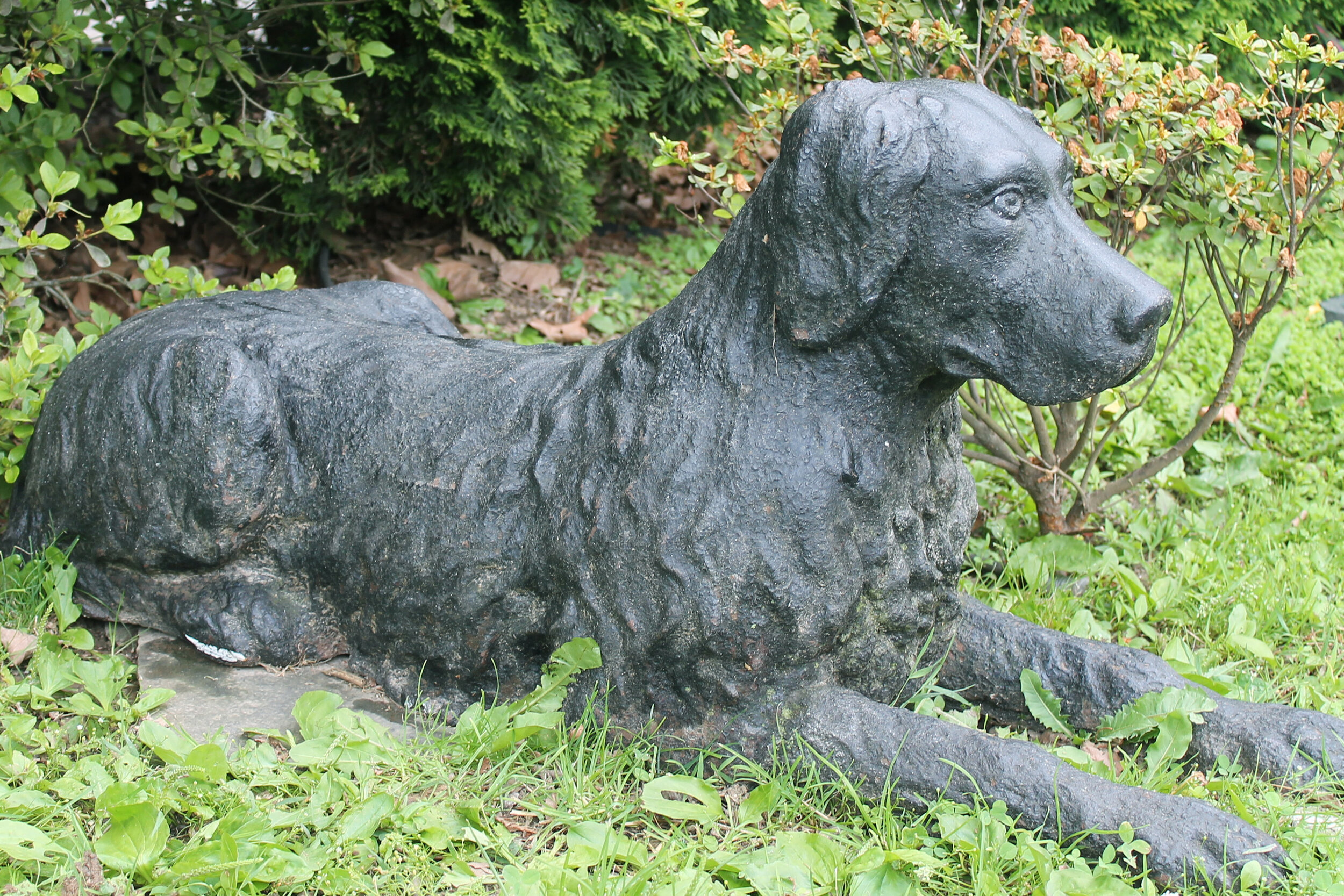
Iron Labrador Retriever. New England, circa 1890. 40" x 12" x 18"H $7500

Sheet Metal Rooster. Probably French, circa 1890-1900. 31" x 13" $2400

American carved spread eagle. 30" x 19" C. 1880 $2450
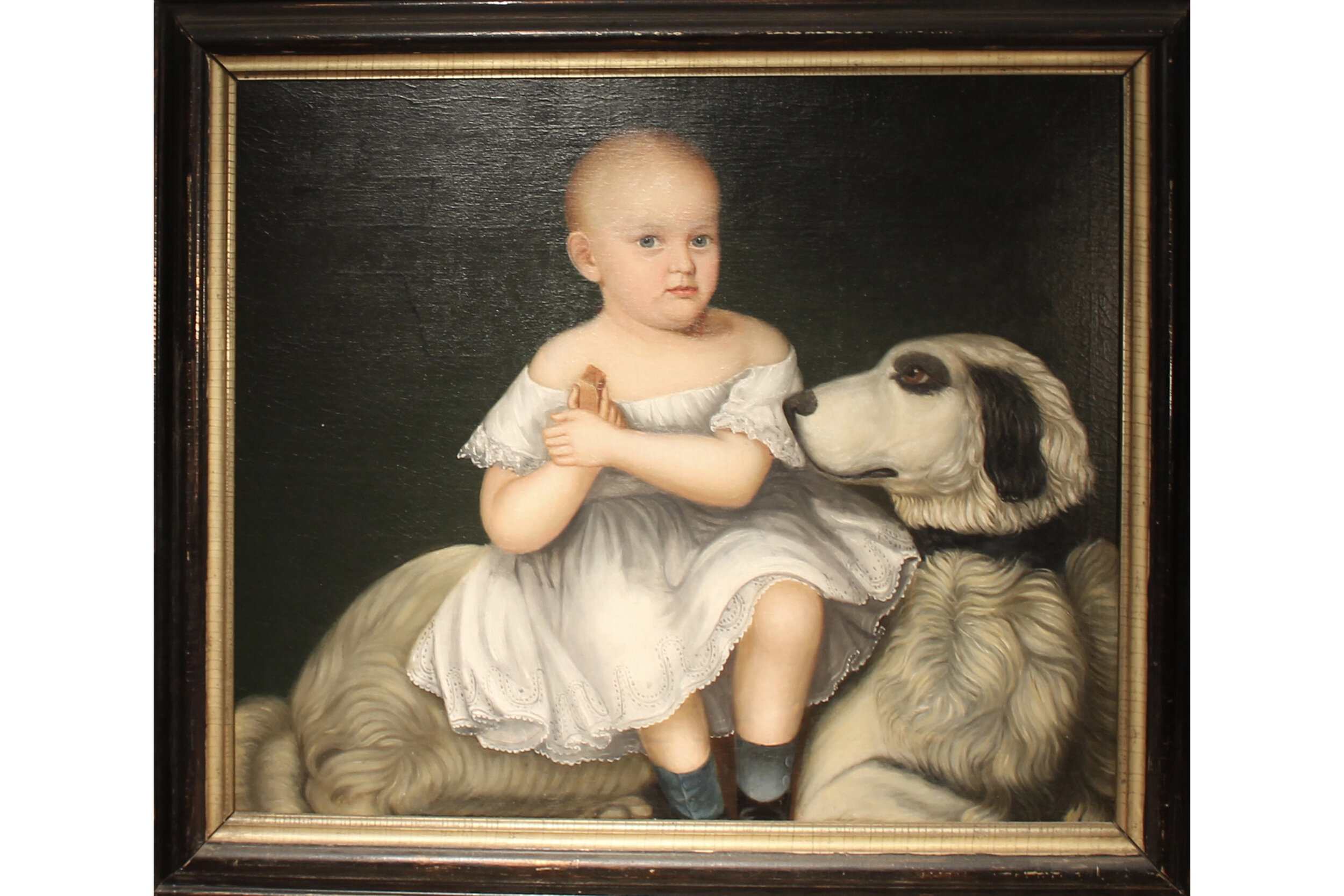
Oil painting of Child with Wonderful Dog. New England, circa 1850. 35" x 30" $12,500

Rochester Iron Rooster Vane with Arrow. C. 1880. Traces of original surface and paint. 24 1/2" x 25"H. x 5" $6800
GERMAN NOAH’S ARKS
Noah’s ark were not only extremely popular in the mid to late 19th century as toys for children, but were also an important source of income for many families who engaged in this cottage industry. Family members were all often involved in the caving, design and, painting of the arks. Children would paint the under coat of gesso and the detailed painting would be left up to the parents. Carving would be the father’s job. In the Nuremberg and Erzgebirge areas of Germany, where toys were a huge business, arks were considered expensive, profitable and highly desirable. The industry grew until the end of World War 1, when knock-off copies were mass-produced and the individual care and attention given by individual carves and painters, was lost to machine made products.
Realizing the huge demand for this wonderful toy, wholesalers designed more and more styles to choose from and often encouraged easier and faster ways to produce them. Originally everything was hand done and individualized. The sides may have been stenciled, but the frieze under the roof cornice would be hand painted and very original in design. The bird with the olive branch would always be included, usually on the slide side. The earlier, best arks would be deep hulled with separately carved animals, with a myriad of wonderfully bright and whimsically colored surfaces. Later in the interest of speed and ease, the arks became flat-bottomed and often had printed paper friezes and sides.
Arks were often referred to as “Sunday toys” – because of their religious connotations. Children were only allowed to play with them on Sundays, and this is probably a main reason why so many of them are still available and in reasonably good condition. The animals, unfortunately, were contained inside the ark, which left them to bang up against each other causing minor damages usually to their appendages and their paint. The arks would have either a slide on one side opening to the animals, or the whole roof and sides section would lift off, giving one access to the interior.
Salesmen from Germany would have elaborate, large books on toys which they would show to potential customers and then take orders based on the example shown. The book were very large and often hand painted showing hundreds of different animals and toys that could be ordered. Those books today are very rare and extremely valuable. Later, these books and pictures were printed and shipped around the world for people to use to place orders. In this country, arks were big business, and both Wanamakers in Philadelphia and F.A.O. Schwarz specialized in them. In the mid-nineteenth century, there were a few different sizes to choose from with basic deep or flat bottom designs. Eventually, before World War 1, the choices became many- from small to large in twenty sizes, from deep bottom to flat, from chromolithographed to straw sides, from stenciled to mass- produced printed- paper sides all with a huge assortment of different animals that could be ordered separately. The individual hand carved animals of the early 19th century gave way to rings of wood which were carved in one full shape and then sliced one after another in the same shape animal in the ring- a far quicker and more efficient way, but certainly this method did not offer the same quality of craftsmanship or individualization.
Animals were often sold separately. In an 1893 catalogue, a dozen boxes offering small animals each were thirty-five cents. The larger animals went for two dollars a dozen with twelve animals each. The animals represent those known and those totally unknown. There are designs of strange animals never seen before with striking colors and fantastical stripes and dots and whorls. There are monkeys sitting on balls and standing on two feet. There are often rare insects including spiders and ladybugs and crickets and beetles. There are people carved with full facial features and bodies that are miniature works of art, and then there are those with circular posts with round hats and clothes to their feet. The choices are numerous and the expertise is diverse.
The deep bottom boats are the most desirable. Those with hand painting and in great condition are obviously the best. The animals have always been as important as the ark itself and one can tell by the number of animals and quality of carving and paint whether the ark is of the best quality. A very fine ark will usually have close to two hundred animals and birds with Noah and his wife and several children who made the journey with him. They really are a wonderful and appealing folk art creation which continues to give pleasure to both children and adults.

AMERICAN CARVED AND PAINTED WONDERFUL BIRDHOUSE. Elaborate and incredible detail work for a bird. Probably New England, circa 1880. Traces of a blue undercoat with grayish white on top. 41 1/2" x 17" x 24". $3700

Carved Dove on orb and base. 15 1/4" x 12" x 5" C. 1860. $1400

Carved and Painted Eagle. c. 1830. 24 3/4" x 20"H. $4500

English or French carved and painted spread eagle with ribbon type carving between its talons. C. 1800. 44 1/2' x 20" x 5 1/2"D. $4500

Sheet Iron Swan. 31 1/2" H x 22"w. C. 1880 $2500


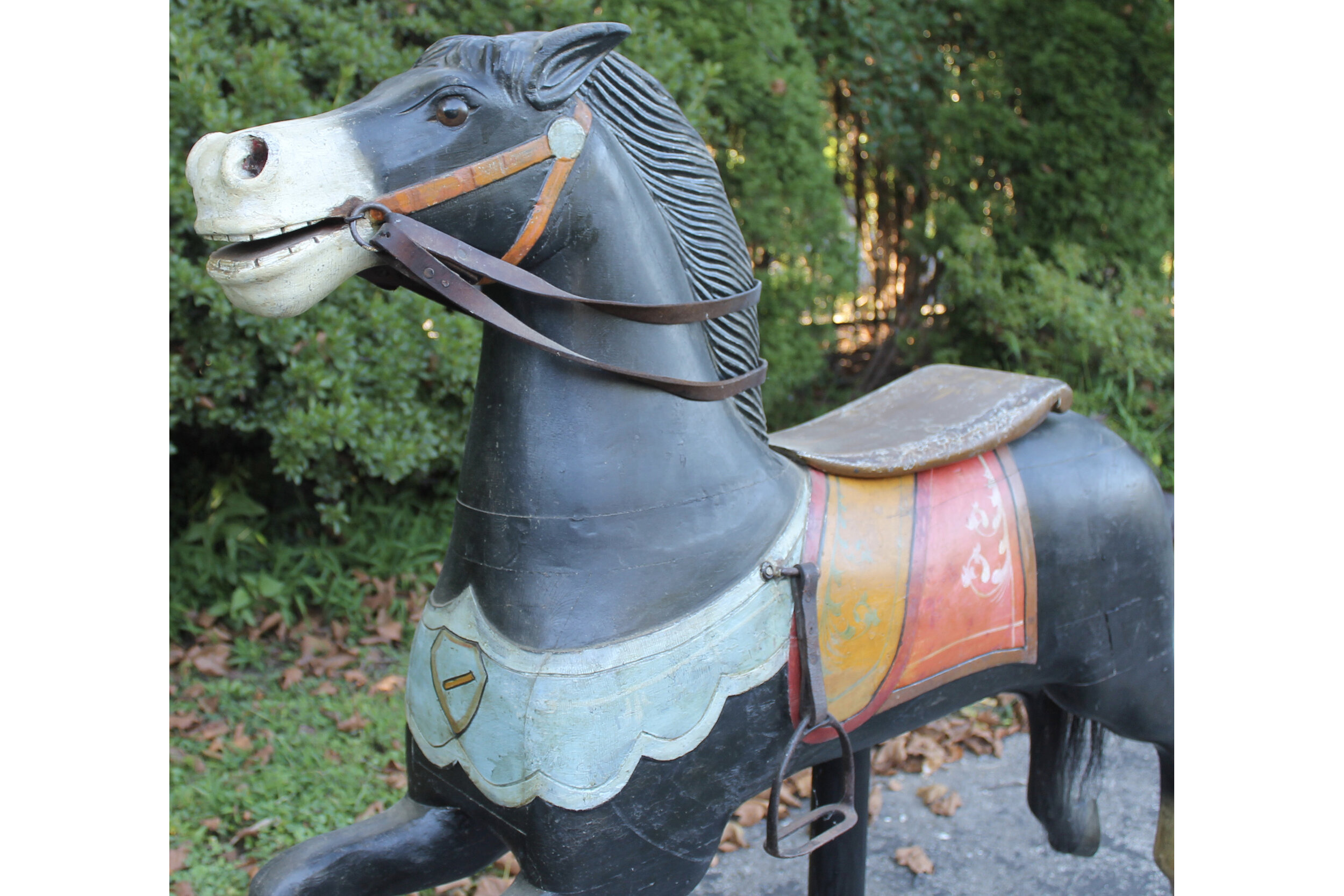
Carved and Original Painted Rearing Horse Carousel Figure. C. 1870. 54" x 55"H. x 14" $6500

Girl With Squirrel. American Oil Painting, c. 1840. 32" x 36" $2800

Child with toy horse. English, c. 1840. 16" x 18" $1850
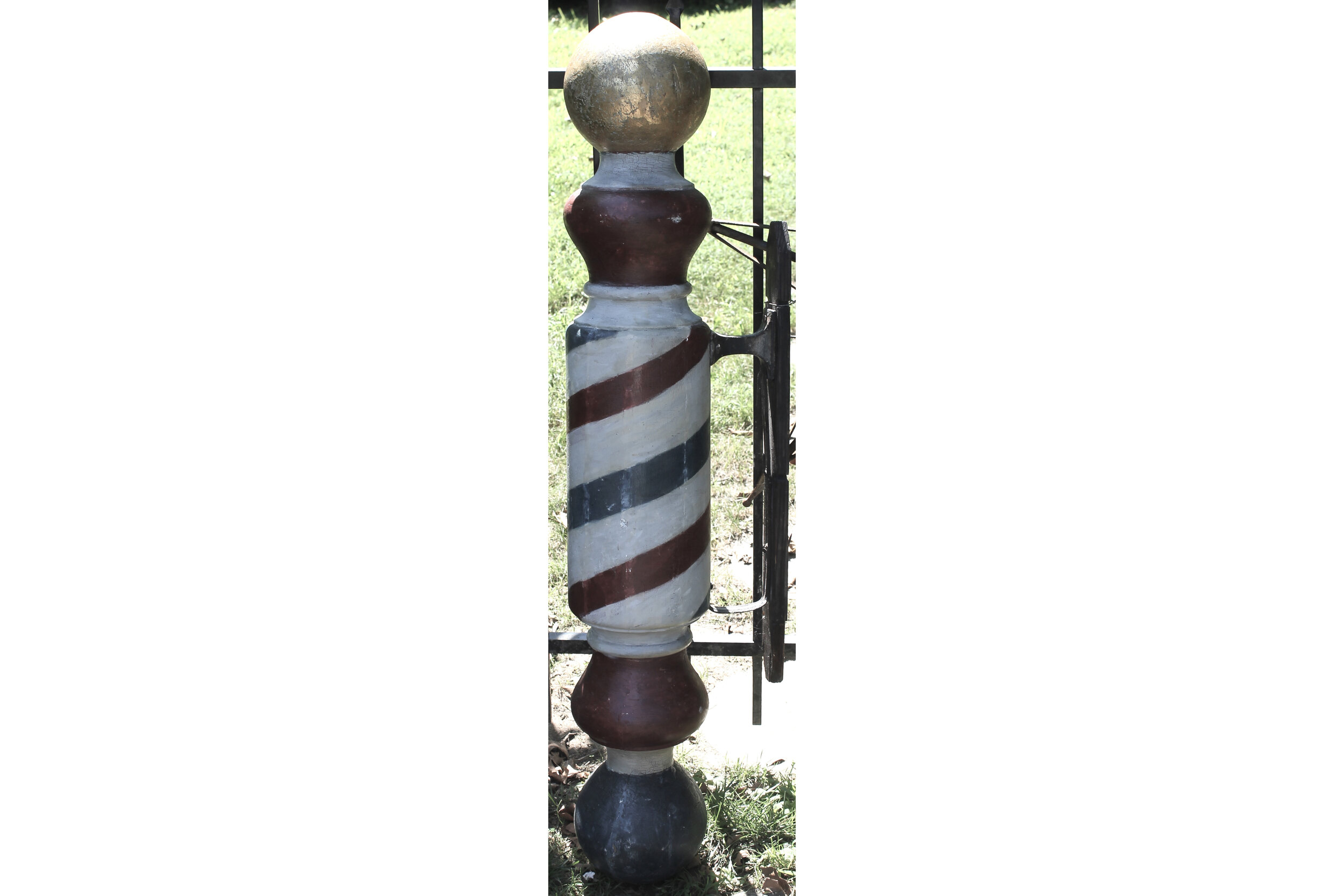
Gold Orb Top Carved and Painted Barber Pole. c. 1870. 51" x 8" $2800

Pair of Architectural Carved Urn Topped Columns. C. 1850. 94" H. x 11 3/4" x 11 3/4" $3500
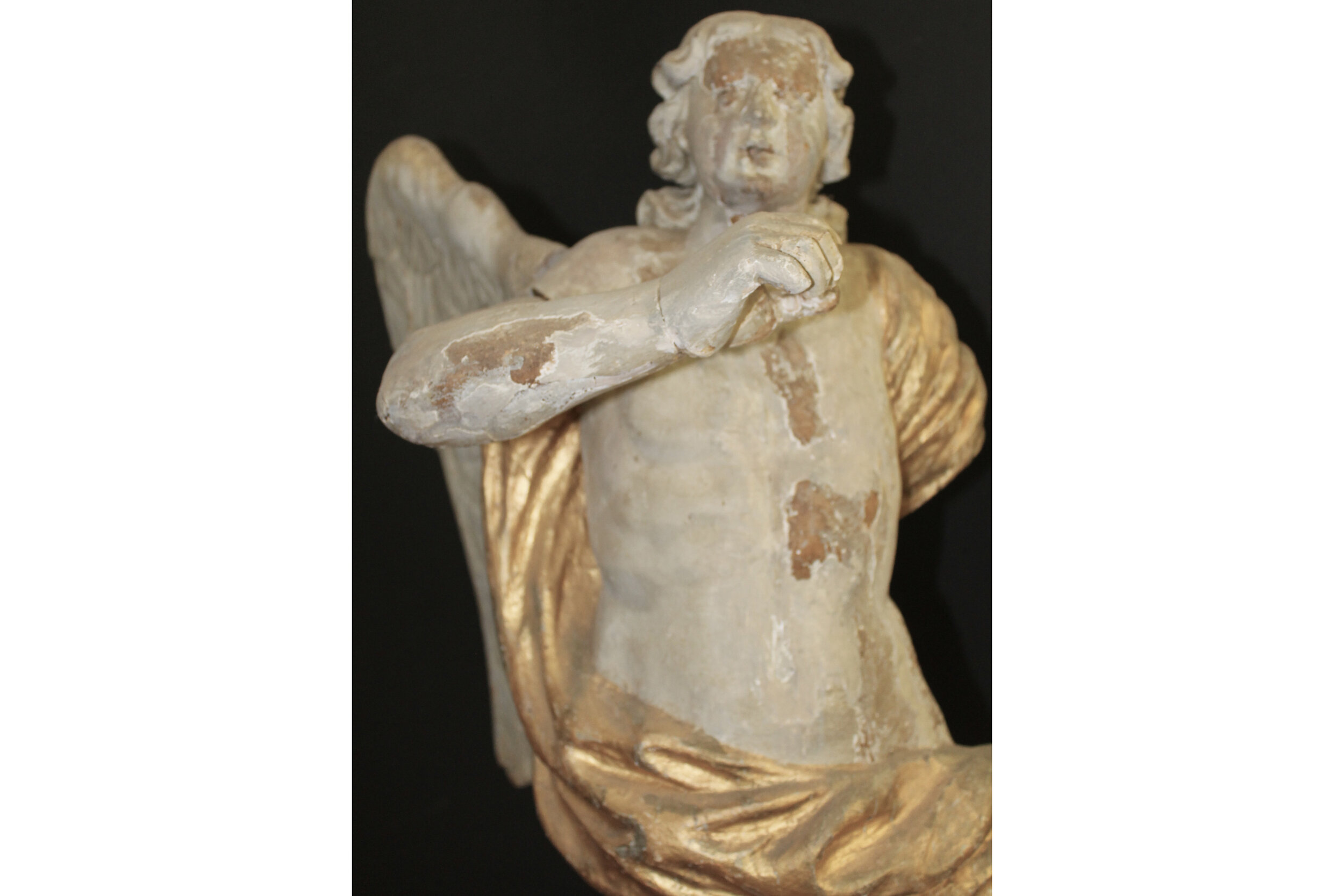


Carved and Painted and Gilded Gabriel Blowing his Gold Horn. Early 19th century. Wonderful detail and carving. Note: Loss of left arm from end of gold toga. Most likely continental. 32" x 17 1/2". $6500

Copper Fireplace Front with fabulous fruit arrangement in relief. C. 1840. 28" 24 1/2" $4500"
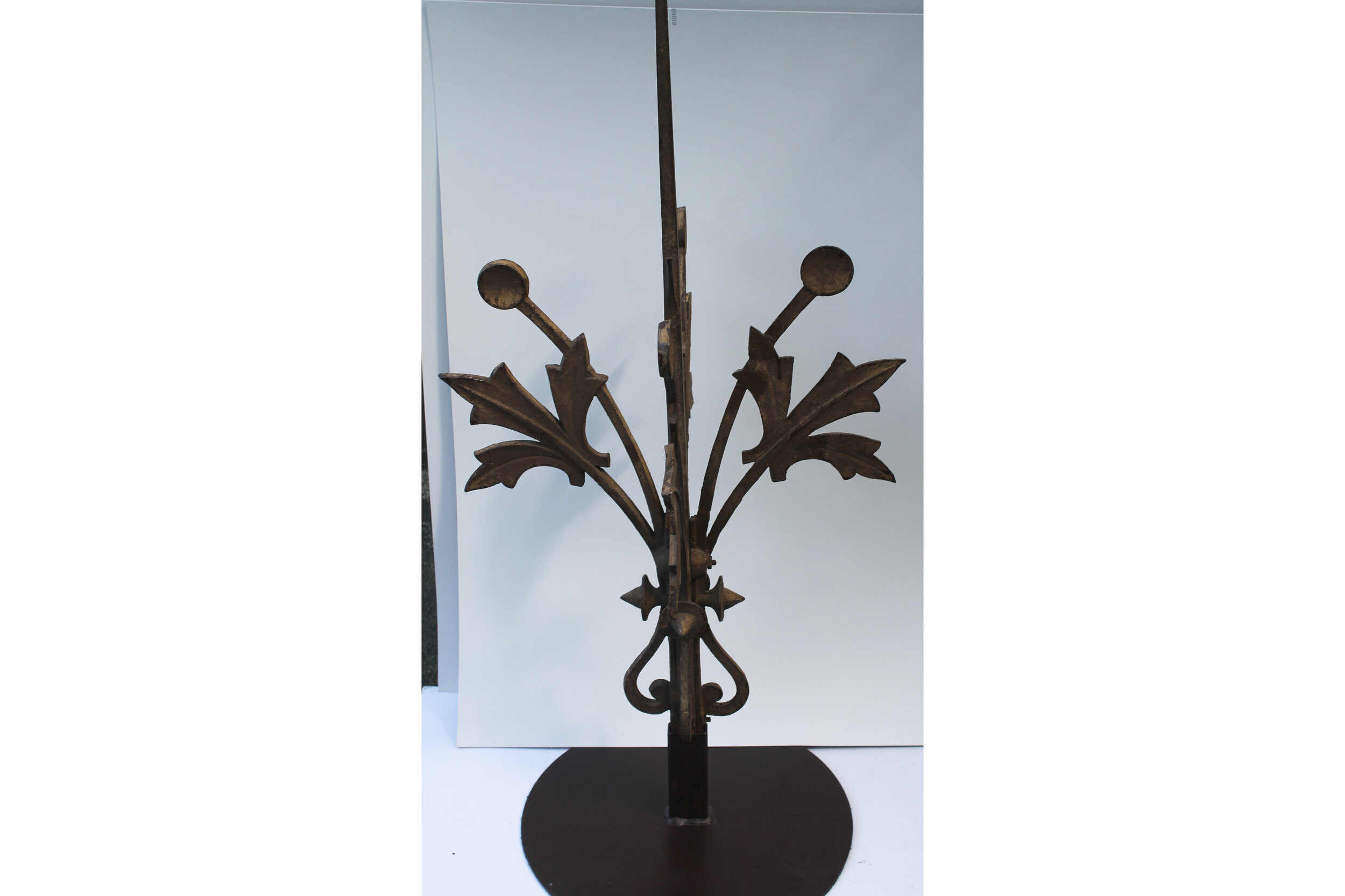
Iron Decorative Finial with elaborate design. C. 1880. 42" x 19 $1500